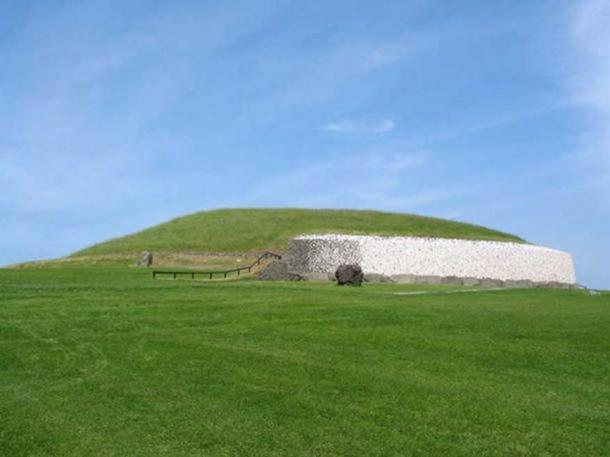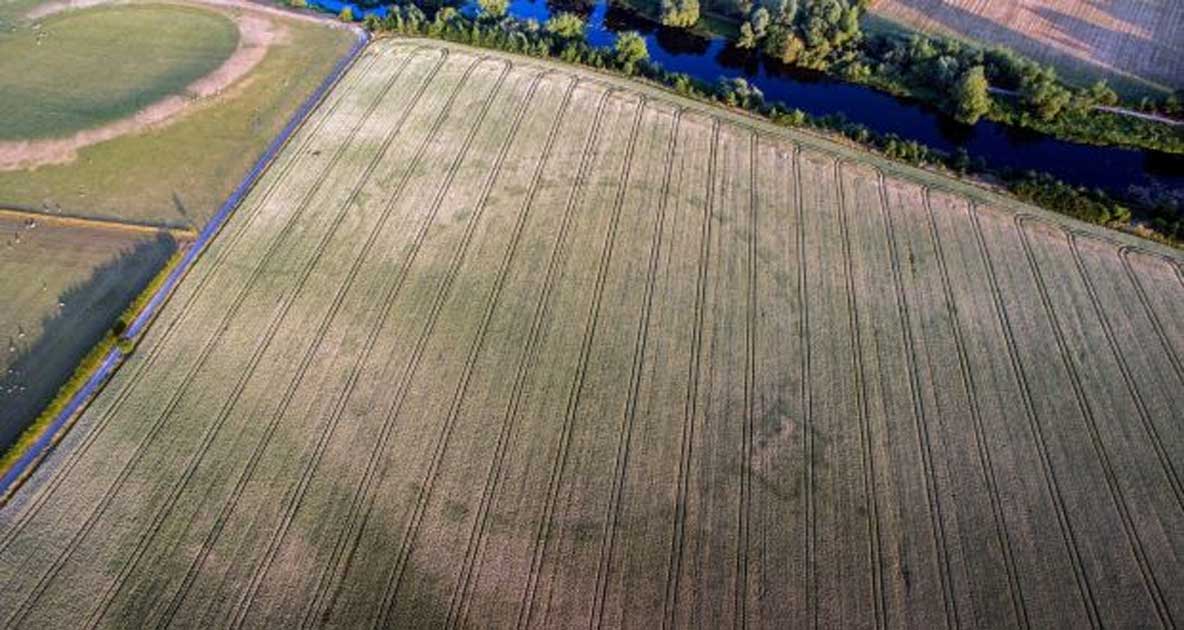New Henge Appears Near Newgrange as a Heatwave Hits Ireland
A summer heatwave has dried the land of the Boyne Valley in Ireland, revealing the shadows of previously unknown circular enclosures. One of the most intriguing appears to be a distinct outline of a large henge. It was found via aerial photographs taken not far from Newgrange – giving it a unique appeal over other forgotten monuments which have been coming to light as the heatwave sweeps through.
After making the find, Anthony Murphy of Mythical Ireland wrote the following post on his Facebook page:
“I'm shaking with excitement as I write this. Myself and Ken Williams of Shadows and Stone imaged some very substantial and previously unrecorded features in the fields near Newgrange this evening. They look like giant henges or enclosures, very similar in scale to Site P, and forming a row-of-three with P. Have a look at these very exciting photographs. If these turn out to be substantial discoveries, then I would be nothing short of utterly elated, chuffed and excited. We're already discussing them with an archaeologist and to say he's very excited is a huge understatement!”
- Newgrange and the Boyne Valley monuments – advanced lunar calculations and observation of the effects of precession of equinoxes in Neolithic Ireland - Part 1
- Shedding Light on Newgrange: 5,000-Year-Old Sun Trap May Not Be All That it Seems

Aerial photo of a newly visible henge found near Newgrange in Ireland. (Anthony Murphy/Mythical Ireland)
Murphy and Williams have both said they have notified the Department of Culture, Heritage and the Gaeltacht of their discovery. It will be interesting to see what the authorities have to say and may choose to do next.
Murphy’s images of his trip with Williams show that a few different circular enclosures have come to light due to the drier climate. The largest is estimated to have a diameter of about 200 meters (656.17 feet). Murphy has attributed much of the visibility of the features to the weather, saying “the weather is absolutely critical to the discovery of this monument. I have flown a drone over the Boyne Valley regularly and have never seen this.”

Faint outlines of two possible henges not far from Newgrange are visible in aerial view. (Anthony Murphy/Mythical Ireland)
By going into more detail it is evident just how rare this sighting is. Murphy told The Irish Times the small quantity of moisture left in the soil, “lodges in the archaeological features a little bit more than it does in the surrounding soil and the crop that is growing out of the soil is greener in the archaeological features and drier outside of them. So when that crop is harvested all surface traces of this monument will vanish and we may not see this monument again for 2 or 3 decades depending on when we get another prolonged dry spell like this.”
A BBC News report on the increase in the appearance of “crop marks” around Wales provides even more information on how this works and some more examples of sites which have popped up across Wales. Archaeologist Louise Barker of the Royal Commission on the Ancient and Historical Monuments of Wales explains, “It’s like a painting that comes out into the fieldscapes. We’re seeing new things with all of these cropmarks; we probably haven’t seen anything like this since the 1970s, the last time there was a really, really dry summer like this.”

Extensive crop marks of Trewen Roman farmstead or villa, Caerwent, Monmouthshire. (RCAHMW)
As an interesting side note, Murphy has also explained that there is a myth supporting the notion of periods of drought in and around Newgrange. He told his Facebook followers, “There's a myth about Newgrange being under water, in a magical sea called Muirthemne. There was a huge sea turtle or monster in the sea called The Mata. The Dagda (sun god) came along and made the water recede, and the monster receded with the water.....”

The Tuatha Dé Danann as depicted in John Duncan's "Riders of the Sidhe" (1911). ( Public Domain ) The Dagda was one of the Tuatha Dé Danann.
A report on the find on Siliconrepublic, takes a step towards describing what the circular structures may have been.
“Unlike Newgrange, these sites show a likelihood that they would have been above-ground structures left in disrepair over a period of centuries until eventually returning to the soil. This can be seen in the darker green areas of the soil at each of these sites, caused by the digging of trenches and rivulets during the construction of foundations. The resulting deeper layer of topsoil, with its greater stores of nutrients and moisture, would take longer to dry out. This means it stays greener than the rest of the fields while the surrounding soil appears bone dry.”
- Baltinglass Hill: Ireland’s Forgotten Gobekli Tepi?
- Newgrange: A Home for Magicians, Fairies, Gods, and Kings

Newgrange, Ireland. ( CC BY SA 3.0)
Archaeologist Dr. Geraldine Stout, has also provided some insight and a possible date on the wider context of the structures, stating,
“I believe Newgrange is just the centre of a much larger sacred landscape and I think there was a whole series of facilities built for the pilgrims coming to Newgrange in prehistory. Generally we believe these henge monuments were built up to 500 years after the main use of Newgrange and in a lot of cases they actually enclose the area of monuments.”
Top Image: The record dry spell has been credited with the discovery of a previously unknown monument beside Newgrange, Co Meath. Source: Ciara Wilkinson/Anthony Murphy




















Comments
Very exciting. It would be a good idea to document all the positions of the stones accurately. E.g. A scale and North bearing on the aerial photo's would allow analysis, ever before a dig!